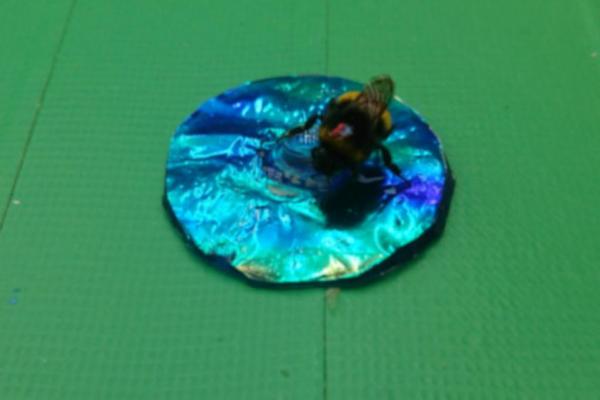
May 26 (UPI) — A bumblebee’s ability to recognize visual cues is compromised by iridescent colors, new research shows.
Iridescence is the visual effect created by nanostructure patterns repeated on an object’s surface, causing light to bounce off at different angles. The effect makes an object appear a glittery rainbow of colors, the makeup of which shifts as the viewer’s perspective changes.
In nature, the visual effect is found on the backs of beetles and on peacock feathers, among other examples.
In the lab, scientists introduced bumblebees to a series of flower shapes. The bees learned to recognize the shapes associated with sugar water. But when scientists used flowers with an iridescent display, the bees were less efficient at getting their sugar fix.
Researchers hypothesize the shifting color display interferes with the bumblebee’s ability to make out the shape of the flower.
Because the oft-studied eyes of bumblebees are similar to other predator insects, like hornets and wasps, scientists believe iridescence may help prevent beetles and other target species from being recognized.
The research team published their findings this week in the journal Scientific Reports.
“If you are a visual predator searching for the specific shape of a beetle — or other prey animal — iridescence makes it difficult for predators to identify them as something edible,” Karin Kjernsmo, a professor of biological sciences at the University of Bristol in England, said in a news release. “We are currently studying this effect using other visual predators, such as birds as well. This is because birds are likely to be the most important predators of iridescent insects.”
That iridescence could work as a defense mechanism was suggested more than a century ago by an American naturalist named Abbott Thayer, but scientists have mostly ignored the possibility, studying the role iridescence plays in attracting mates, instead.
“This study has wider implications for how we understand animal vision and camouflage — now when we see these shiny beetles we can know that their amazing colors have many more functions than previously thought,” Kjernsmo said.



